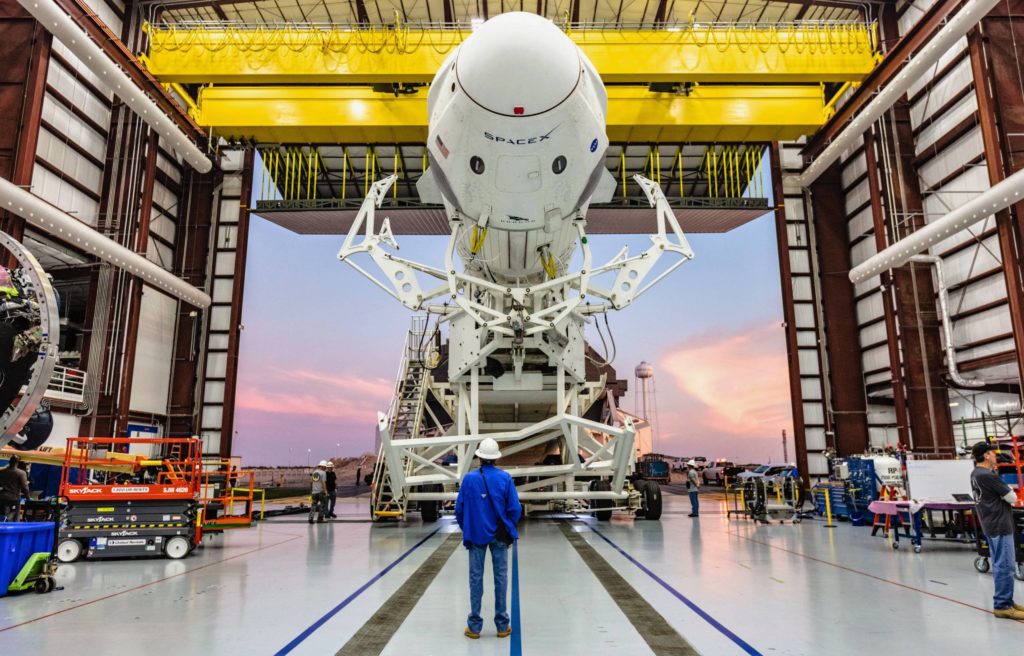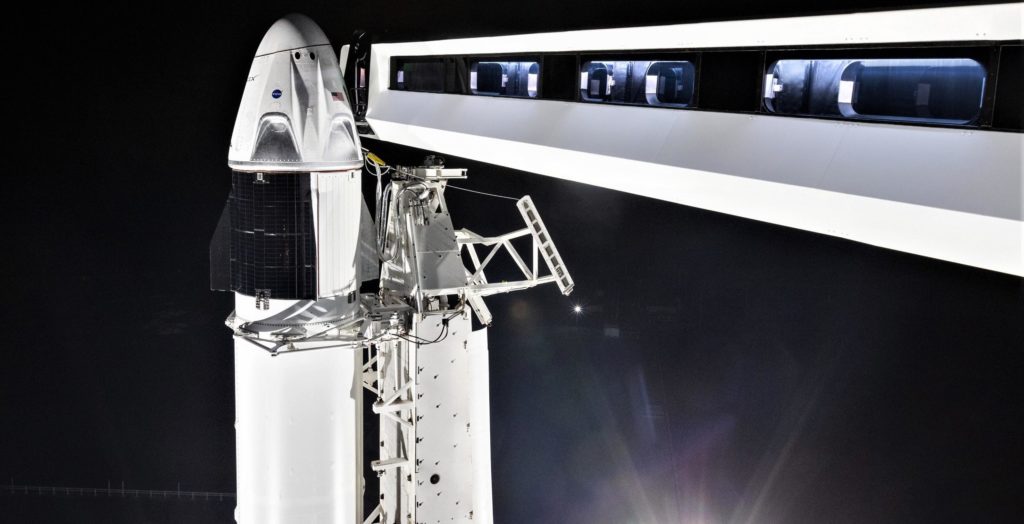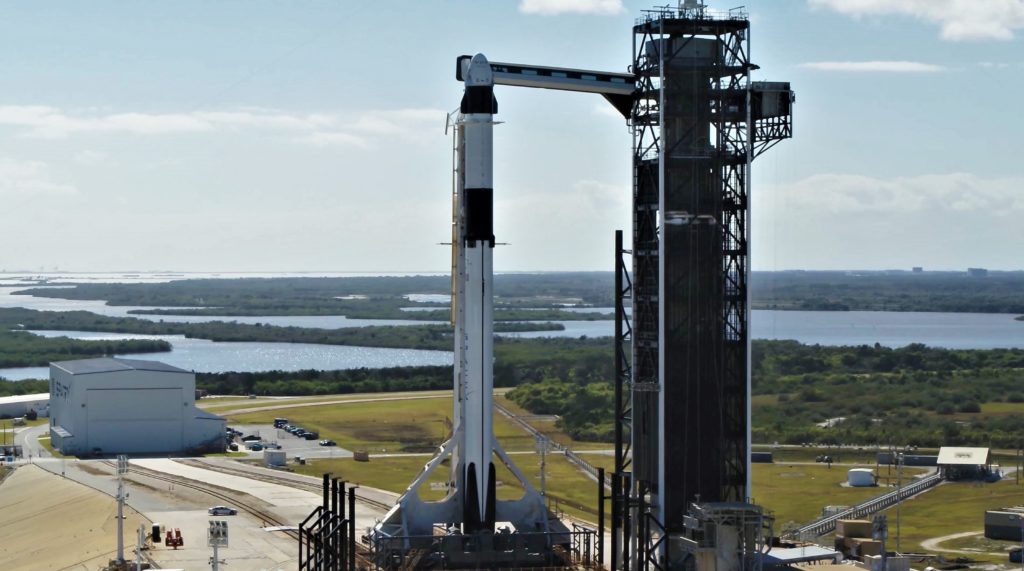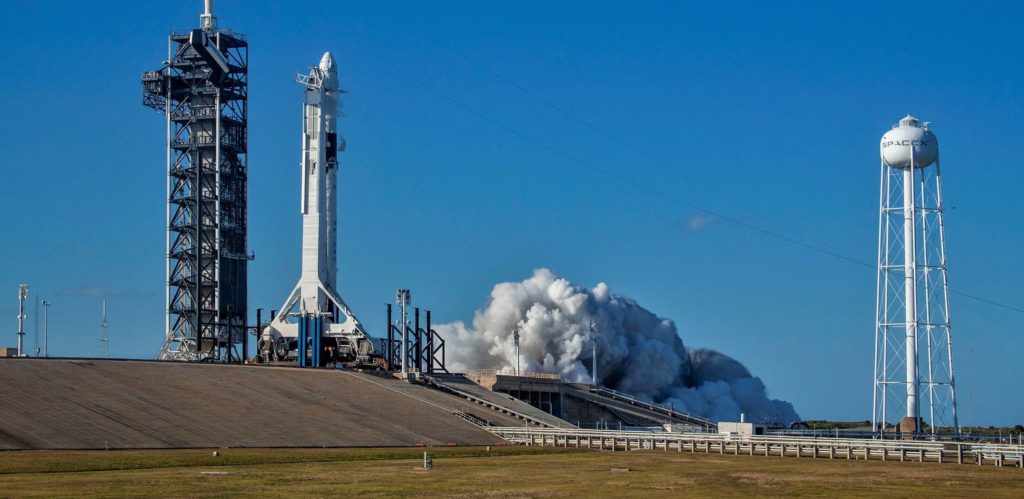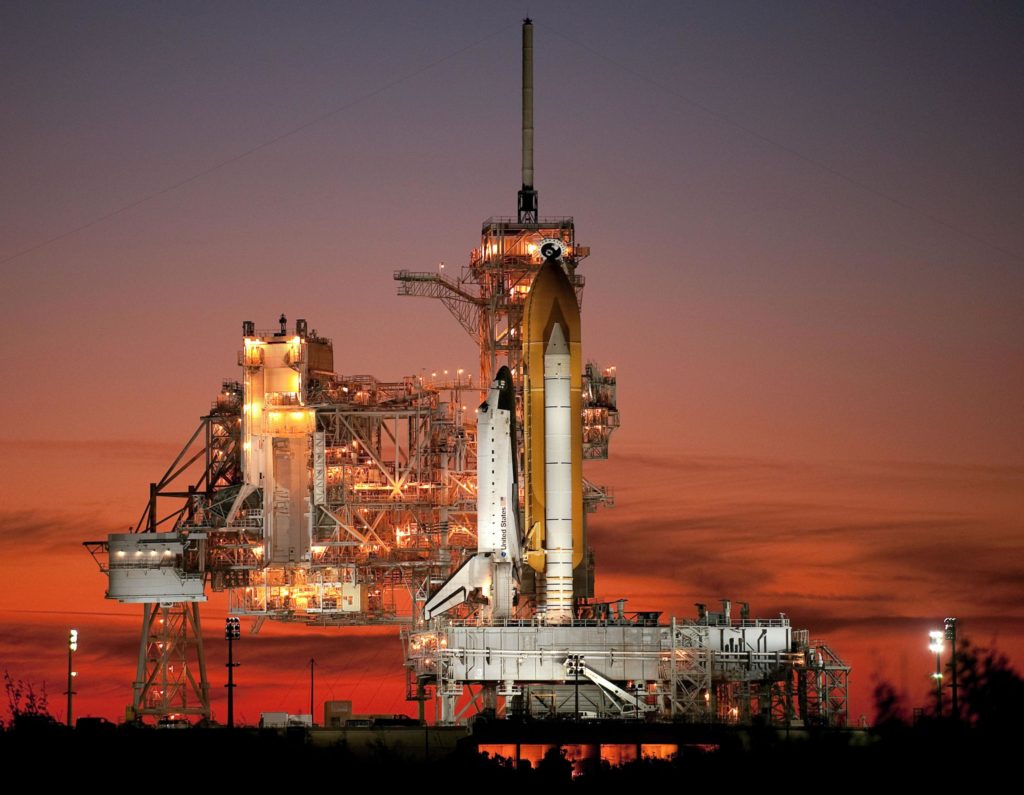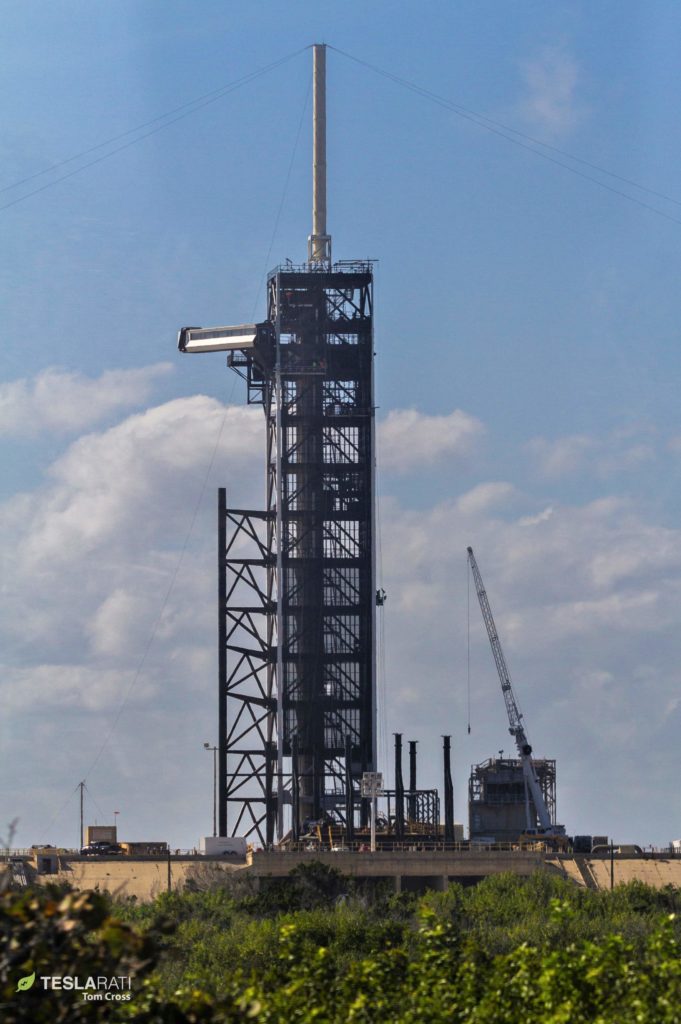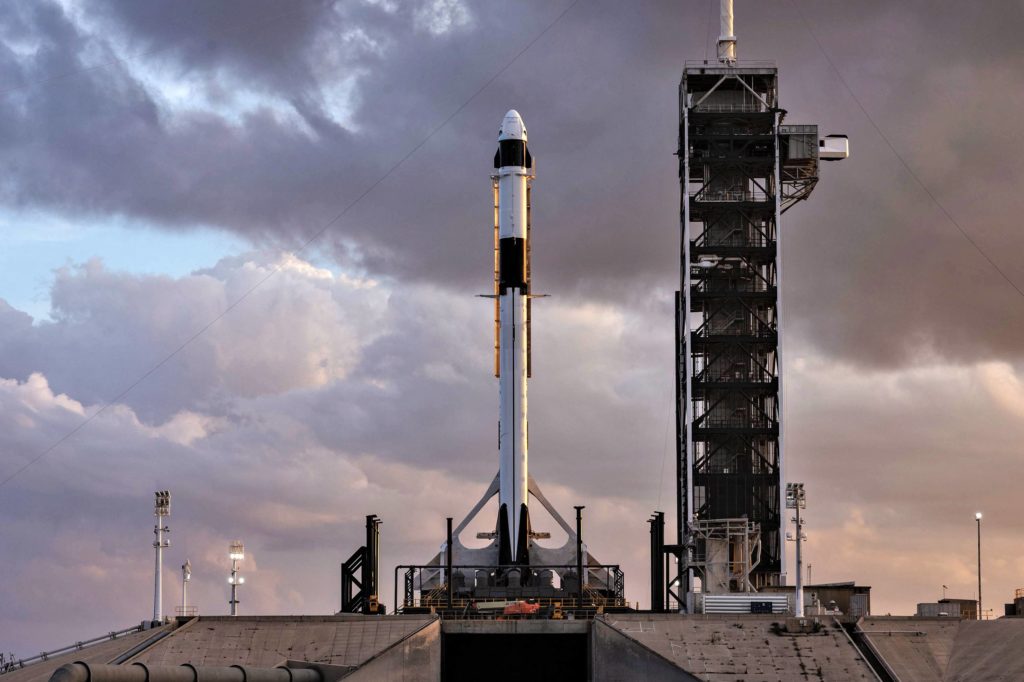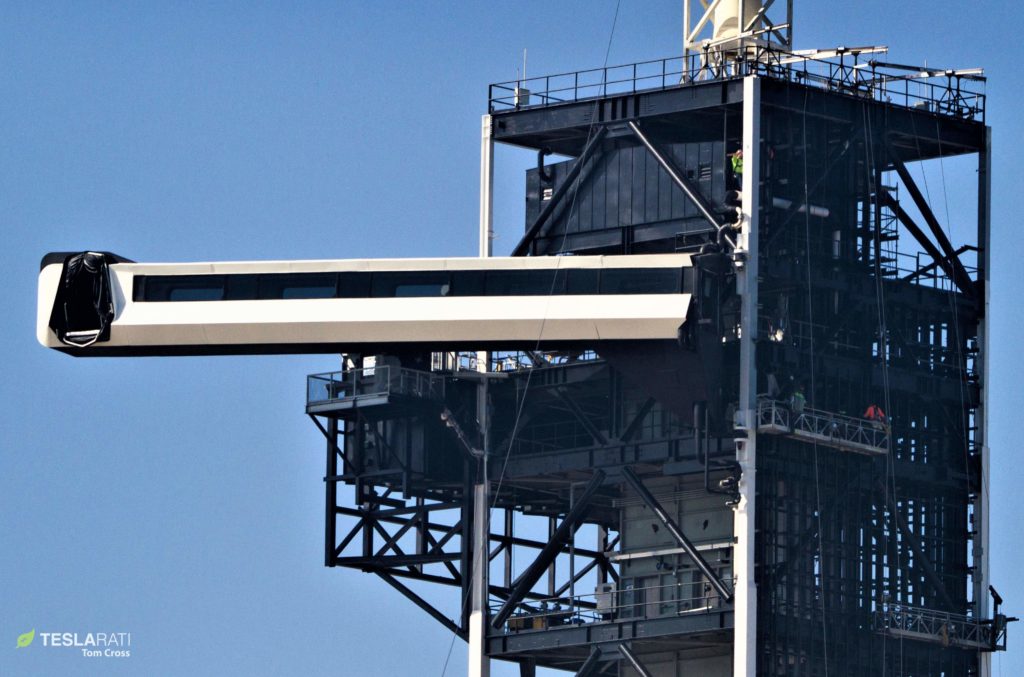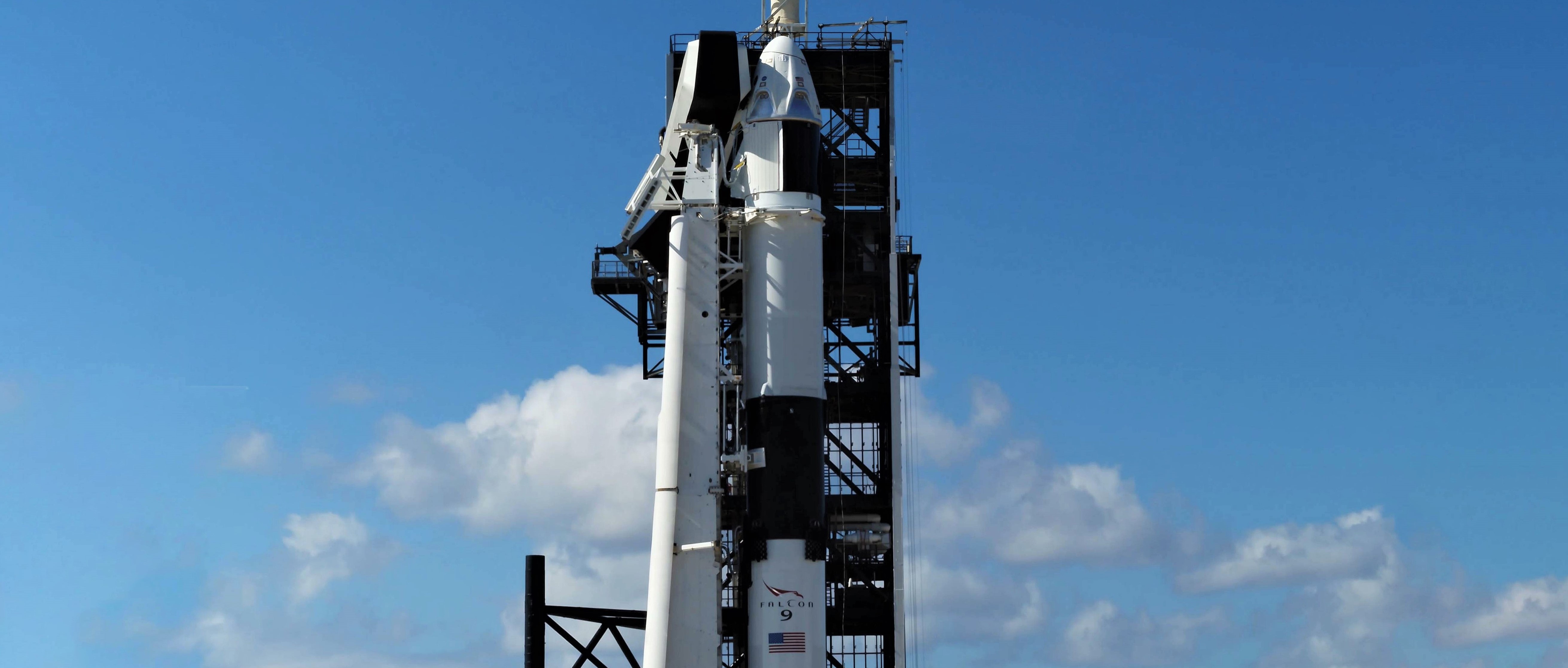

SpaceX
SpaceX’s Crew Dragon and Falcon 9 head to Pad 39A for historic launch debut
NASA has confirmed that a Feb. 27th launch readiness review (LRR) prior to the orbital debut of SpaceX’s Crew Dragon spacecraft concluded with all parties remaining “go” for the historic launch.
Scheduled to liftoff at 2:48 am EST (07:48 UTC) on March 2nd, Falcon 9 and Crew Dragon can now begin to roll out to Launch Complex 39A (‘Pad 39A’) and complete final preflight checks approximately 24-48 hours before launch. After relentless work over the last few months, SpaceX has also largely completed a significant series of changes – many aesthetic – to Pad 39A, giving the historic complex a sleek new black and white paint scheme and enclosed tower (FSS).
And there's the confirmation the LRR was completed and with a GO. Rollout is next. Expect lots of cool photos especially with the 39A FSS now fully "cladded" compared to the photo in the tweet during the Static Fire test. https://t.co/SQHcd3Ahgo
— NSF – NASASpaceflight.com (@NASASpaceflight) February 28, 2019
Falcon 9, Crew Dragon “go” for launch
Following up the Flight Readiness Review (FRR) five days later, the completion of the Launch Readiness Review (LRR) effectively means that SpaceX can now proceed into launch operations a bit like any other mission, rolling the rocket and spacecraft out to Pad 39A, taking the assembly vertical, and finally completing (relatively) routine preflight preparations. SpaceX pad engineers and technicians have already completed a wet dress rehearsal (WDR) and static fire test over the last two months, meaning that they have already gained a significant amount of real-world experience working with and operating the brand new Crew Dragon spacecraft and its human-rated Falcon 9 rocket.
This milestone has been the better part of a decade in the making, beginning in 2009 or 2010 (depending on definitions) with funding from NASA dedicated to what would ultimately become the Commercial Crew Program (CCP). SpaceX did not begin to receive rewards or dedicated Crew Dragon-related funding until April 2011, when NASA awarded the company $75M to develop the spacecraft’s proposed integral abort system, relying on a newly developed Super Draco engine. In August 2012, NASA awarded Sierra Nevada, SpaceX, and Boeing several hundred million dollars each to continue serious development of their respective crewed spacecraft and launch vehicles, followed in 2014 by firm long-term contracts with SpaceX and Boeing to bring their Crew Dragon and Starliner vehicles to fruition.
- The integrated DM-1 Crew Dragon ‘stack’ rolled out to Pad 39A for the first time in the first few days of 2019. (SpaceX)
- Crew Dragon and its crew-rated Falcon 9 went vertical at a launch pad (Pad 39A) for the first time ever on January 4th. (SpaceX)
- Crew Dragon and Falcon 9 B1051 stand vertical at Pad 39A during preparations for a late January static fire test. (SpaceX)
- SpaceX completed a successful static fire of the first Falcon 9 rated for human flight on January 24th. (SpaceX)
- An official SpaceX render shows Falcon 9 and Crew Dragon lifting off from Pad 39A. (SpaceX)
Of note, SpaceX’s contract was valued at $2.6B, while Boeing received $4.2B, a full 60% more to complete an effectively identical task. Sadly, the US Congress systematically underfunded CCP during its formative years, largely a consequence of entrenched political and financial interests in preferentially funding NASA’s own SLS rocket and crewed Orion spacecraft above and at the cost of other rocket and spacecraft development initiatives. Insufficient funding likely contributed heavily to the years of delays subsequently suffered by the program and its commercial providers, pushing a nominal launch debut target from 2015 to 2017 before ultimately moving to 2018 and finally 2019, largely a result of unsurprising technical challenges faced by each provider as they entered into hardware- and testing-rich phases of development.
After approximately 5-6 years of concerted work, SpaceX and NASA are now as ready as they’ll ever be to conduct the first orbital launch of the Commercial Crew Program, to be followed as early as by Boeing’s own uncrewed orbital demonstration of its Starliner spacecraft. For those that have followed CCP for even part of its years-long saga, it’s more than a little surreal to be faced with the reality that such a milestone is barely two days distant.
Pad 39A: more than just a fresh coat
Meanwhile, SpaceX’s leased Pad 39A launch complex has undergone its own significant changes. Dating back to NASA’s Apollo Program, Pad 39A supported all but one of Saturn V’s 13 launches and more than 80 Space Shuttle launches before SpaceX took over the pad in 2014. In the five years the company has leased the facility, a range of changes have been made to the pad’s hardware, support facilities, and the primary metalwork known as service structures, one fixed (FSS) and one rolling (RSS). Aside from a bare skeleton of the RSS hinge, SpaceX has completely removed several hundred tons of Shuttle support hardware, while the FSS (the skyscraper-like rectangular tower) has remained largely unchanged, aside from the installation of a new level and Crew Dragon’s Crew Access Arm (CAA) on the ~110m (350 ft) tower.
- Space Shuttle Atlantis prepares for STS-129’s Pad 39A launch, November 2009. (NASA/Bill Ingalls)
- 39A is seen here on February 11th, 2009 from a very similar angle to the 2009 photo of Shuttle Atlantis. (Tom Cross)
- Falcon 9 and Crew Dragon vertical at Pad 39A. (SpaceX)
- SpaceX technicians work on the tower and access arm, Feb. 11. (Tom Cross)
Most recently, the company has pursued a series of visually distinct changes to tower, painting it almost entirely black with white highlights and installing partially transparent black plexiglass panels along the full length of at least 2-3 of its four walls. While the paint color is almost certainly aesthetically motivated (it matches Falcon 9, Crew Dragon, and the access arm), the decision to enclose all or most of the FSS will likely be very well received the astronauts and technicians it will ultimately support, especially if SpaceX manages to keep out Florida’s notorious mosquitoes.
If SpaceX’s uncrewed DM-1 Crew Dragon demonstration is a success, the company could follow it up with Crew Dragon’s first launch with astronauts aboard as early as July 2019, officially returning 39A to active place in human spaceflight and marking the end of more than eight years spent without a domestic solution for transporting US astronauts into orbit.
Check out Teslarati’s newsletters for prompt updates, on-the-ground perspectives, and unique glimpses of SpaceX’s rocket launch and recovery processes!
News
SpaceX launches Ax-4 mission to the ISS with international crew
The SpaceX Falcon 9 launched Axiom’s Ax-4 mission to ISS. Ax-4 crew will conduct 60+ science experiments during a 14-day stay on the ISS.
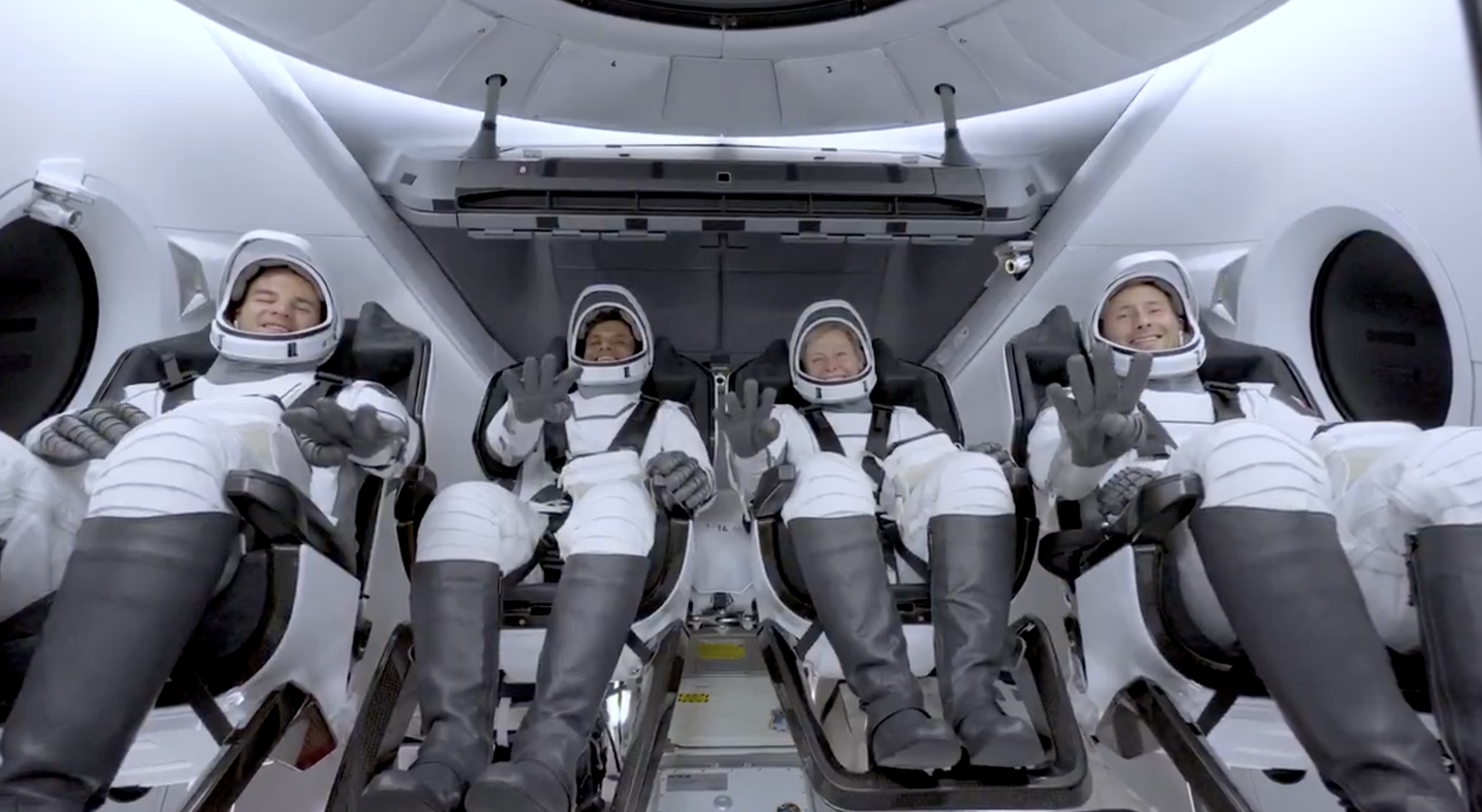
SpaceX launched the Falcon 9 rocket kickstarting Axiom Space’s Ax-4 mission to the International Space Station (ISS). Axiom’s Ax-4 mission is led by a historic international crew and lifted off from Kennedy Space Center’s Launch Complex 39A at 2:31 a.m. ET on June 25, 2025.
The Ax-4 crew is set to dock with the ISS around 7 a.m. ET on Thursday, June 26, 2025. Axiom Space, a Houston-based commercial space company, coordinated the mission with SpaceX for transportation and NASA for ISS access, with support from the European Space Agency and the astronauts’ governments.
The Ax-4 mission marks a milestone in global space collaboration. The Ax-4 crew, commanded by U.S. astronaut Peggy Whitson, includes Shubhanshu Shukla from India as the pilot, alongside mission specialists Sławosz Uznański-Wiśniewski from Poland and Tibor Kapu from Hungary.
“The trip marks the return to human spaceflight for those countries — their first government-sponsored flights in more than 40 years,” Axiom noted.
Shukla’s participation aligns with India’s Gaganyaan program planned for 2027. He is the first Indian astronaut to visit the ISS since Rakesh Sharma in 1984.
Axiom’s Ax-4 mission marks SpaceX’s 18th human spaceflight. The mission employs a Crew Dragon capsule atop a Falcon 9 rocket, designed with a launch escape system and “two-fault tolerant” for enhanced safety. The Axiom mission faced a few delays due to weather, a Falcon 9 leak, and an ISS Zvezda module leak investigation by NASA and Roscosmos before the recent successful launch.
As the crew prepares to execute its scientific objectives, SpaceX’s Ax-4 mission paves the way for a new era of inclusive space research, inspiring future generations and solidifying collaborative ties in the cosmos. During the Ax-4 crew’s 14-day stay in the ISS, the astronauts will conduct nearly 60 experiments.
“We’ll be conducting research that spans biology, material, and physical sciences as well as technology demonstrations,” said Whitson. “We’ll also be engaging with students around the world, sharing our experience and inspiring the next generation of explorers.”
SpaceX’s Ax-4 mission highlights Axiom’s role in advancing commercial spaceflight and fostering international partnerships. The mission strengthens global space exploration efforts by enabling historic spaceflight returns for India, Poland, and Hungary.
News
Starlink Cellular’s T-Mobile service to grow with third-party app data
From Oct 2025, T-Satellite will enable third-party apps in dead zones! WhatsApp, X, AccuWeather + more coming soon.
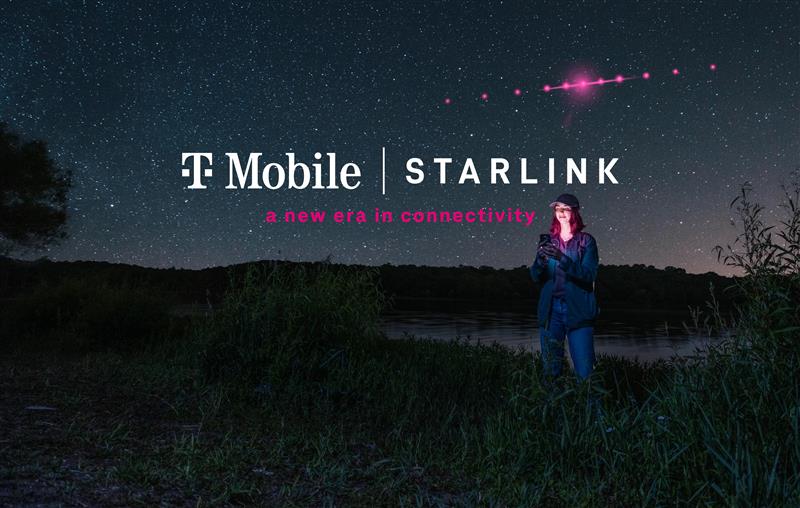
Starlink Cellular’s T-Mobile service will expand with third-party app data support starting in October, enhancing connectivity in cellular dead zones.
T-Mobile’s T-Satellite, supported by Starlink, launches officially on July 23. Following its launch, T-Mobile’s Starlink Cellular service will enable data access for third-party apps like WhatsApp, X, Google, Apple, AccuWeather, and AllTrails on October 1, 2025.
T-Mobile’s Starlink Cellular is currently in free beta. T-Satellite will add MMS support for Android phones on July 23, with iPhone support to follow. MMS support allows users to send images and audio clips alongside texts. By October, T-Mobile will extend emergency texting to all mobile users with compatible phones, beyond just T-Mobile customers, building on its existing 911 texting capability. The carrier also provides developer tools to help app makers integrate their software with T-Satellite’s data service, with plans to grow the supported app list.
T-Mobile announced these updates during an event celebrating an Ookla award naming it the best U.S. phone network, a remarkable turnaround from its last-place ranking a decade ago.
“We not only dream about going from worst to best, we actually do it. We’re a good two years ahead of Verizon and AT&T, and I believe that lead is going to grow,” said T-Mobile’s Chief Operating Officer Srini Gopalan.
T-Mobile unveiled two promotions for its Starlink Cellular services to attract new subscribers. A free DoorDash DashPass membership, valued at $10/month, will be included with popular plans like Experience Beyond and Experience More, offering reduced delivery and service fees. Meanwhile, the Easy Upgrade promotion targets Verizon customers by paying off their phone balances and providing flagship devices like the iPhone 16, Galaxy S25, or Pixel 9.
T-Mobile’s collaboration with SpaceX’s Starlink Cellular leverages orbiting satellites to deliver connectivity where traditional networks fail, particularly in remote areas. Supporting third-party apps underscores T-Mobile’s commitment to enhancing user experiences through innovative partnerships. As T-Satellite’s capabilities grow, including broader app integration and emergency access, T-Mobile is poised to strengthen its lead in the U.S. wireless market.
By combining Starlink’s satellite technology with strategic promotions, T-Mobile is redefining mobile connectivity. The upcoming third-party app data support and official T-Satellite launch mark a significant step toward seamless communication, positioning T-Mobile as a trailblazer in next-generation wireless services.
News
Starlink expansion into Vietnam targets the healthcare sector
Starlink aims to deliver reliable internet to Vietnam’s remote clinics, enabling telehealth and data sharing.

SpaceX’s Starlink expansion into Vietnam targets its healthcare sector. Through Starlink, SpaceX seeks to drive digital transformation in Vietnam.
On June 18, a SpaceX delegation met with Vietnam’s Ministry of Health (MoH) in Hanoi. SpaceX’s delegation was led by Andrew Matlock, Director of Enterprise Sales, and the discussions focused on enhancing connectivity for hospitals and clinics in Vietnam’s remote areas.
Deputy Minister of Health (MoH) Tran Van Thuan emphasized collaboration between SpaceX and Vietnam. Tran stated: “SpaceX should cooperate with the MoH to ensure all hospitals and clinics in remote areas are connected to the StarLink satellite system and share information, plans, and the issues discussed by members of the MoH. The ministry is also ready to provide information and send staff to work with the corporation.”
The MoH assigned its Department of Science, Technology, and Training to work with SpaceX. Starlink Vietnam will also receive support from Vietnam’s Department of International Cooperation. Starlink Vietnam’s agenda includes improving internet connectivity for remote healthcare facilities, developing digital infrastructure for health examinations and remote consultations, and enhancing operational systems.
Vietnam’s health sector is prioritizing IT and digital transformation, focusing on electronic health records, data centers, and remote medical services. However, challenges persist in deploying IT solutions in remote regions, prompting Vietnam to seek partnerships like SpaceX’s.
SpaceX’s Starlink has a proven track record in healthcare. In Rwanda, its services supported 40 health centers, earning praise for improving operations. Similarly, Starlink enabled remote consultations at the UAE’s Emirati field hospital in Gaza, streamlining communication for complex medical cases. These successes highlight Starlink’s potential to transform Vietnam’s healthcare landscape.
On May 20, SpaceX met with Vietnam’s Ministry of Industry and Trade, announcing a $1.5 billion investment to provide broadband internet, particularly in remote, border, and island areas. The first phase includes building 10-15 ground stations across the country. This infrastructure will support Starlink’s healthcare initiatives by ensuring reliable connectivity.
Starlink’s expansion in Vietnam aligns with the country’s push for digital transformation, as outlined by the MoH. By leveraging its satellite internet expertise, SpaceX aims to bridge connectivity gaps, enabling advanced healthcare services in underserved regions. This collaboration could redefine Vietnam’s healthcare infrastructure, positioning Starlink as a key player in the nation’s digital future.
-

 Elon Musk4 days ago
Elon Musk4 days agoTesla investors will be shocked by Jim Cramer’s latest assessment
-

 News1 week ago
News1 week agoTesla Robotaxi’s biggest challenge seems to be this one thing
-

 Elon Musk2 weeks ago
Elon Musk2 weeks agoFirst Look at Tesla’s Robotaxi App: features, design, and more
-

 News2 weeks ago
News2 weeks agoSpaceX and Elon Musk share insights on Starship Ship 36’s RUD
-

 News2 weeks ago
News2 weeks agoWatch Tesla’s first driverless public Robotaxi rides in Texas
-

 News1 week ago
News1 week agoWatch the first true Tesla Robotaxi intervention by safety monitor
-

 News2 weeks ago
News2 weeks agoTesla has started rolling out initial round of Robotaxi invites
-

 Elon Musk2 weeks ago
Elon Musk2 weeks agoTesla to launch in India in July with vehicles already arriving: report

